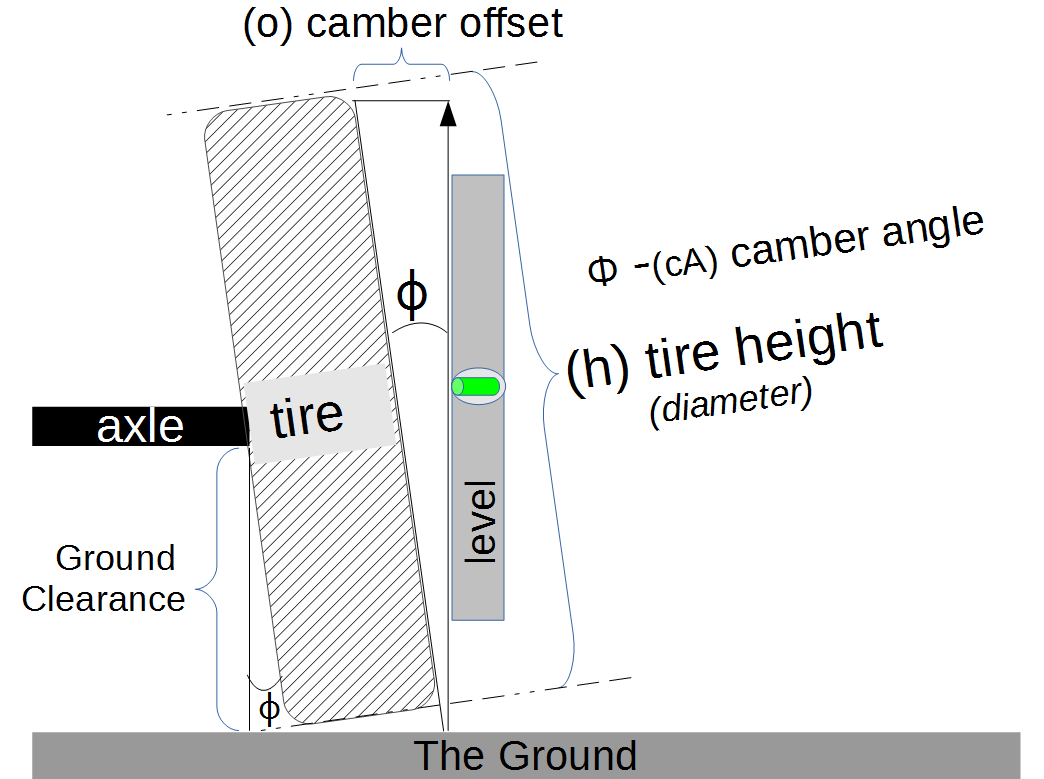Found it here...
The Breakover Angle calculator computes the maximum angle that a vehicle can drive over without the ground touching the vehicle's undercarriage. Breakover Angle(B), Wheel Base (wb) and Ground Clearance (gc) INSTRUCTIONS: Choose units and enter the following: (gc) Ground Clearance.

www.vcalc.com
It seems like my application should be less than ~28° , right? Looking at your blue triangle... if you take the line sloping down to C, and bring it up to the level B is at... it seems you would be allowed double the angle.
I guess you misunderstood me. The formula you used
includes the doubling, so your
14.3° is the answer to your question. I didn't say to double it
again; and my picture shows doubling of 7.13°
to get 14.26°, which is the answer. I never mentioned 28°.
That site never shows a picture of what the answer means in practice; but it does show a picture that, if you think carefully about it, shows that the angle they calculate, B, is in fact twice the angle of the triangle they show under a car. Later it says,
Breakover angle is a relevant performance metric in many common vehicle scenarios, including:
The second scenario is exactly what you asked, and is what the formula applies to. The third is probably intended to mean the same thing, but can be read as if it referred to going over a single hump shorter than the wheelbase, in which case you would really just need the height to be less than the ground clearance. In fact,
their Wikipedia source also lists speed bumps, which is an error unless they meant really long speed bumps.

